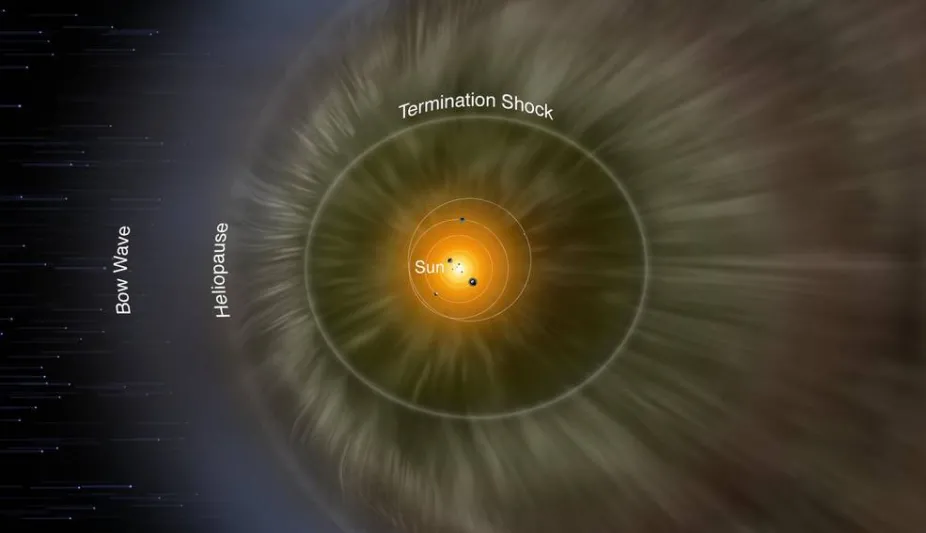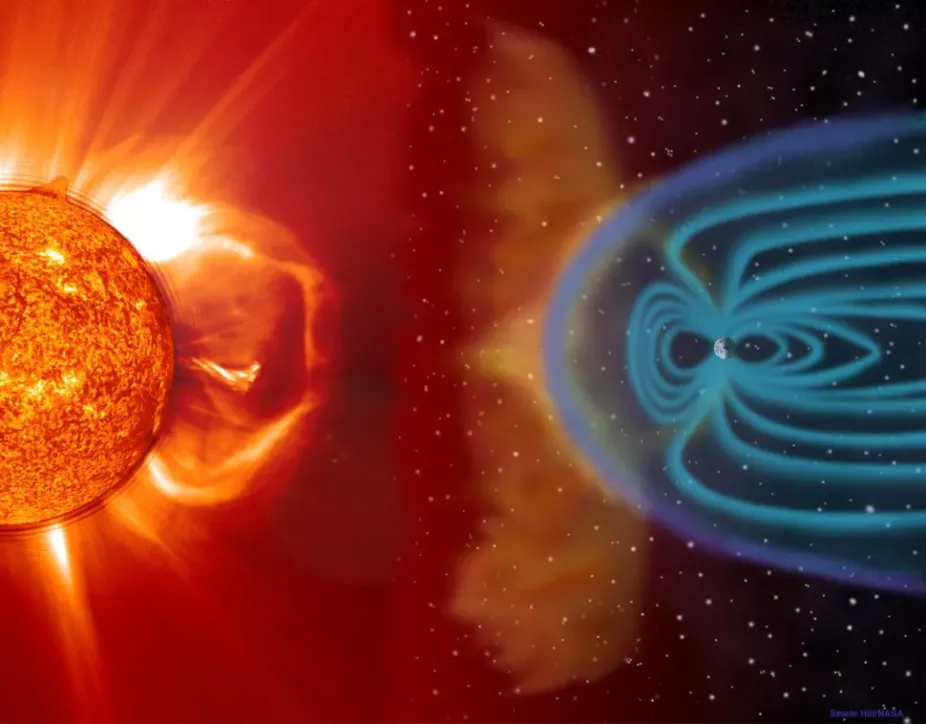Solar Wind
Most of the Sun's energy is emitted in the form of visible light, but the Sun also emits energy that can’t be seen. This invisible energy is known as the solar wind, and it extends throughout our entire solar system and even beyond.
The solar wind is continuously flowing from the Sun. It is made up of ionized plasma and particles that escape from the Sun’s corona. In this outer atmosphere, temperatures are extremely high, causing plasma to expand so much that it breaks free from solar gravity and is released into space.

An artist’s illustration of solar wind streaming out from the Sun. The solar wind is constantly released from the Sun’s outer atmosphere.
NASA
Solar Wind Speed Changes as it Flows Through Space
The solar wind travels faster than the speed of sound. During events like solar flares and coronal mass ejections, when larger than normal amounts of solar energy are released from the Sun, the speed of the solar wind increases, reaching speeds of over one million miles per hour. The farther it travels from the Sun, the thinner the solar wind becomes, and though it still travels at very high speeds, it begins to slow down.
The Solar Wind Influences Earth’s Magnetosphere

The solar wind expands like a balloon around the Sun, forming what is known as the heliosphere. The Voyager 2 spacecraft now travels outside of the heliopause, where the Sun has no influence. Voyager 2 has helped us to better understand what happens to solar wind at the edges of our solar system.
NASA
When the solar wind leaves the corona, it carries with it part of the Sun’s magnetic field. This magnetic field within the solar wind interacts with planets as it flows past them. Earth’s magnetosphere acts as a shield, deflecting the solar wind and causing most of the particles carried within it to flow around us. This interaction with the solar wind causes Earth’s magnetosphere to compress at some points and stretch at others.
Charged solar wind particles that enter Earth’s atmosphere near the poles react with gases within our atmosphere to create auroras, which are beautiful displays of light in the sky. Astronauts living in the International Space Station and satellites that orbit the Earth are constantly bombarded with solar wind particles. When there are solar storms that increase the energy in the solar wind, astronauts must take precautions to shield themselves from harmful radiation. Sometimes satellites are damaged or even destroyed by these solar storms.

Earth’s magnetosphere (illustrated by the blue-toned lines) shields us from much of the solar wind but is compressed and stretched as plasma and solar particles stream around it.
NASA